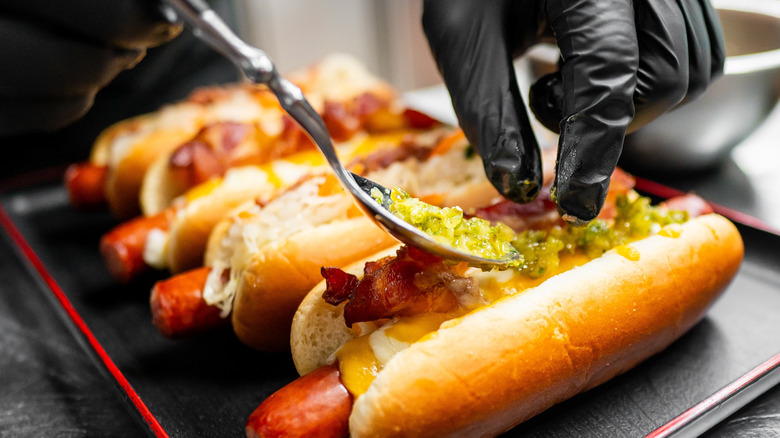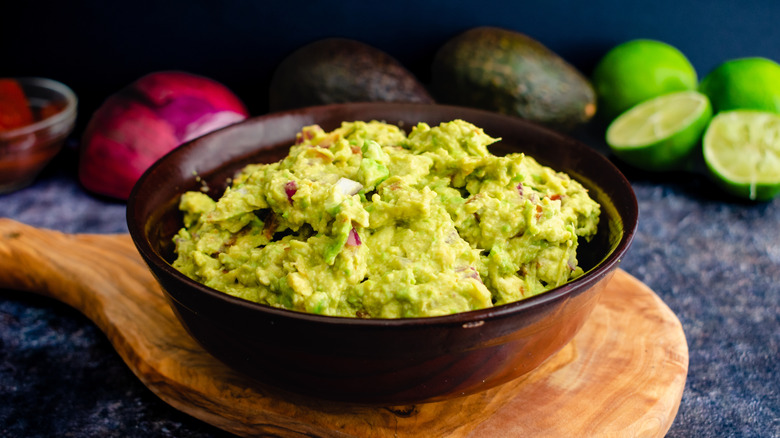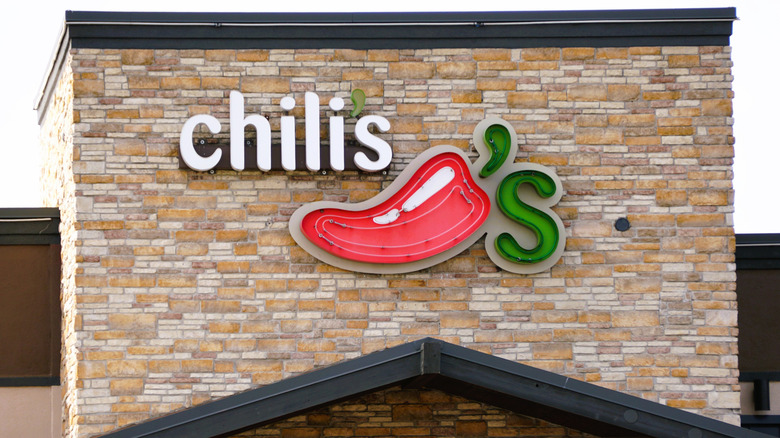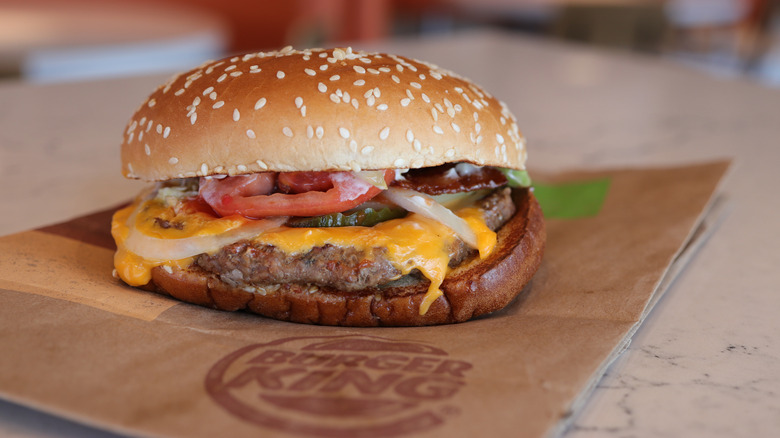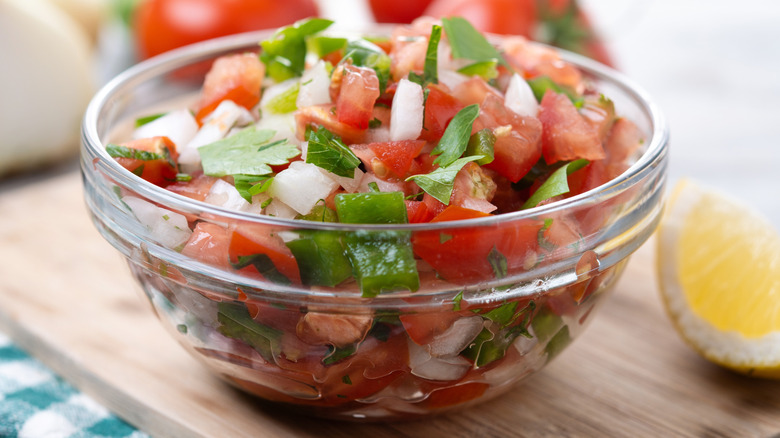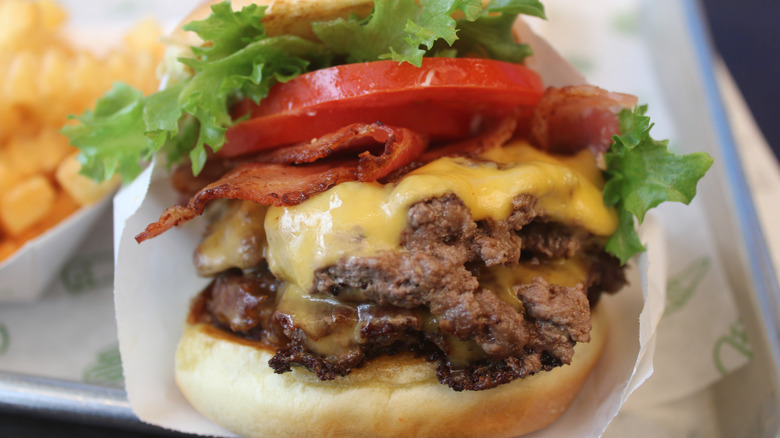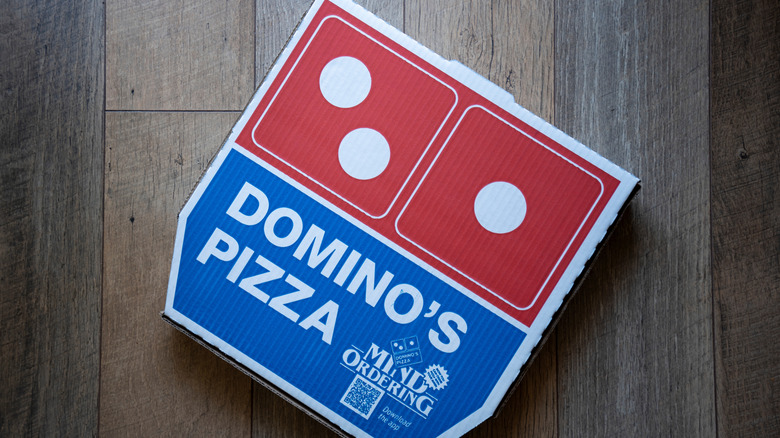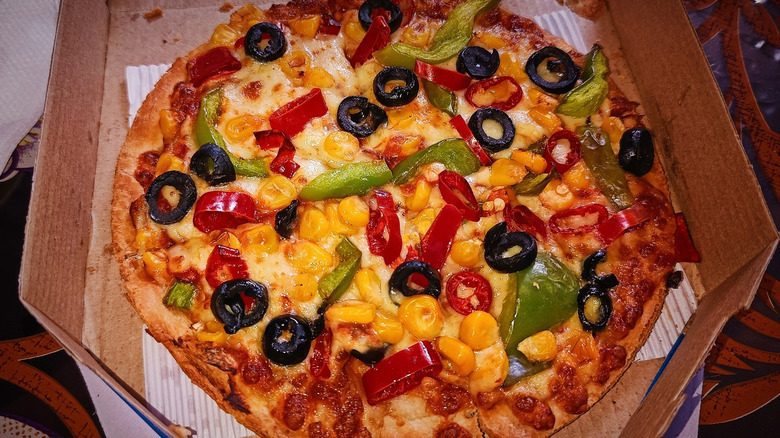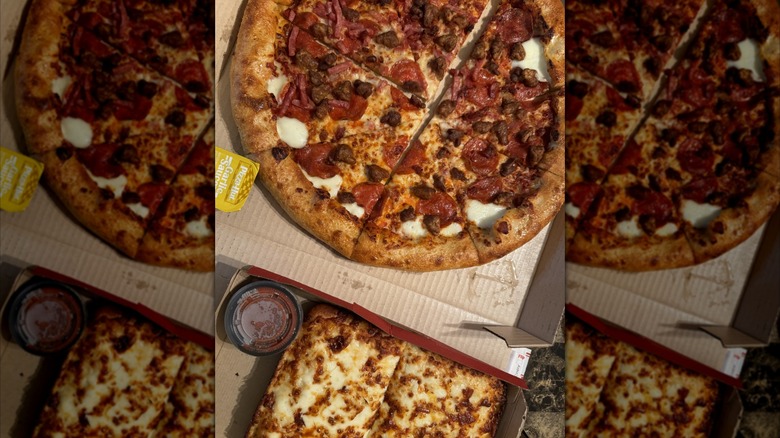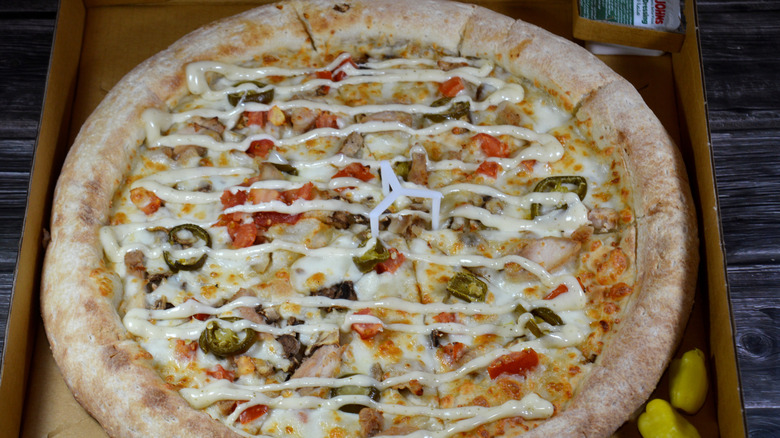Add-Ons At Popular Chains That Aren't Worth The Extra Cost
It's no secret that restaurant chains love promotions. Both fast food chains and fast casual outfits are known for using every trick in the book to try and wrestle your hard-earned money from you, with money-off deals, loyalty programs, and birthday rewards all popular ways to entice you into spending a little more than you intended to. In our opinion, though, the use of add-ons is more effective than all of these. By promising that your food will be just that bit bigger or better if you spend a little extra on an ingredient or two, chains give you the illusion of choice while creating a serious profit margin.
The problem, though, is that all too often these add-ons are super disappointing. How often have you spent a couple extra bucks on bacon, only to be presented with a few limp, soggy slices that look as though they've been cooked with a desk lamp? Why is it that the extra cheese option is always so unsatisfying, considering the amount you pay on it? Plus, who are the worst offenders for disappointing add-ons, and what are the places you need to avoid spending that additional money? We've got the answers to all those questions, right here.
Extra guac from Chipotle
Adding extra guac to your meals has always been something that costs you cash, but it never used to be as pricey as it feels today. When you're ordering from Chipotle, it feels especially outrageous. About 10 years ago or so, extra guacamole at the chain would cost around $1.80, which is definitely a fair deal to spend but which didn't hurt the wallet that much. As of 2025, when you opt for extra guac when ordering items on its website, it costs $2.95. Yikes.
Now, we know that Chipotle guac is tasty, and that it gives a lot of fresh flavor to a dish. However, when you think about what's actually in it, it's hard to justify spending almost three dollars on a little scoop or two. A classic guacamole recipe is made up of things like avocado, onion, tomatoes, and cilantro, none of which are especially expensive to purchase in a grocery store. You could likely make enough guac to last you the week with three dollars' worth of ingredients. Plus, vegan and vegetarian folks understandably take issue with the fact that guac costs extra in meals that don't have any meat or cheese, given that they're already missing out on more traditionally expensive ingredients.
Extra sauce from Chili's
A bit of extra sauce is never a bad thing, unless you're paying too much for it. It used to be the case that fast food joints offered extra sauce for free, but nowadays more and more of them are starting to sneak charges in for them. While some of these don't sting too badly, we'd argue that Chili's takes it a bit too far. Buying an extra pot of sauce from Chili's will cost you a dollar apiece, and while you get four ounces of sauce in every container, it's hard not to think about the mere pennies it costs the restaurant to make them.
It's also difficult not to see this as a way to offer an illusion of choice while also driving additional sales. Fast food chains are well aware of the power of sauces to create a feeling of customization. Nowadays, you can get a huge range of them in virtually every fast food restaurant, and Chili's is no different, offering 13 different options to its customers. However, all of these options can easily prompt you to spend a couple extra dollars than you intended to, with Chili's ultimately benefitting.
Extra cheese at Burger King
It's easy to be tempted by the offer of extra cheese. After all, what could be better than making a burger even more delicious? However, at Burger King, it feels like the choice isn't worth making. While prices can vary depending on which order you're adding cheese to, opting for an extra slice can routinely cost you more than a dollar. If you're customizing a larger burger like the Triple Whopper on its website and choose to add cheese, it costs $1.80.
What do you get for your money? A few flimsy, droopy slices of American cheese, which have a flat taste, an unsatisfying texture, and often make little impact to the actual enjoyment of your meal. You can pick up 24 slices of Great Value American cheese at Walmart for just under $2.50, so to think that the restaurant is charging almost two dollars on a few humble slices is pretty wild. Plus, it's worth remembering that Burger King does phenomenally well when customers add cheese to their burgers, making a huge markup due to the price difference of how much they spend on their cheese versus how much they charge.
Extra pico de gallo from Applebee's
What's in a classic pico de gallo? To be honest, nothing that explains how much it costs to add it onto an order at Applebee's. Pico de gallo is made with relatively few ingredients, all of which are pretty cheap: Onions, tomatoes, cilantro, chiles, and lime juice don't exactly break the bank. Despite this, when you customize an order on the Applebee's website that allows you to add pico de gallo (like its Quesadilla Chicken Salad), you'll see that it costs $1.29. Its cheddar cheese blend, meanwhile, is somehow cheaper, costing 99 cents.
There's no denying that pico de gallo is tasty, and a little extra gives food a touch of freshness. We also know that there are more expensive options to add to your meal, and $1.29 isn't an unbelievable amount to pay. However, it all comes down to what's actually in the addition itself. At the time of writing this article, a pound each of onions, tomatoes, a few green chiles, a couple of limes, and a bunch of cilantro costs just over $4.50 from Walmart. For that price, you could probably make around 20 servings of pico de gallo — oh, and it'd probably be way more satisfying.
Extra bacon at Shake Shack
The promise of extra bacon is often so much better than the actual result. Perhaps nowhere is this as obvious as at Shake Shack. When you add bacon to a burger when ordering on its website, you'll be charged $1.99 for the privilege. It's important to remember that Shake Shack burgers aren't the cheapest out there, either: opting for a Triple Hamburger and adding bacon costs more than $14.
So, what do you get for your money? A couple of slices of flimsy, thin bacon, which may or may not be cooked properly. To be fair, this isn't unique to Shake Shack: Cooking bacon properly is something that fast food restaurants across the board seem to struggle with. However, when you're paying the price you are for a Shake Shack burger, you want everything to be worth the money — and the bacon just kinda isn't. Save your money, and spend it on buying bacon that you can cook properly at home.
Alternative pizza sauce at Domino's
Domino's is hardly the cheapest fast food restaurant out there, and you can walk away from an order there with a serious dent in your finances. They'll be even more dented if you opt to change up the base of your pizza with a different sauce, which we consider to be one of the big ordering mistakes from this chain. Instead of its standard pizza sauce, you can choose to top your 'za with BBQ, Alfredo, ranch, or Parmesan white sauce. If you choose its ranch as a base when ordering online, though, Domino's immediately raises the price of your pizza by $2.50.
This hasn't gone unnoticed by customers, who have noted that this can vary depending on location – but regardless, we can't escape the feeling that Domino's shouldn't be doing this in the first place. Opting for ranch instead of tomato sauce is essentially a substitution, and although it may cost Domino's more to make it, it feels both unfair and a big jump in the cost of your pizza for what you're actually getting. Plus, Domino's keeps this price difference very quiet: You only see it once you've added your pizza to your basket, and unless you're comparing the prices you may not notice. Although it doesn't charge for the other sauces at the moment, doing this sets a precedent for further costs on different sauces. We don't love that.
Extra vegetables at Domino's
Domino's has a way of adding a lot of extra costs onto its menu items, and while charging for additional toppings is pretty standard, the prices can be quite extreme. Take its vegetables, for instance. The price of a banana pepper, a bunch of spinach, or a pack of mushrooms in a supermarket is pretty low, right? Well, when you buy a pizza at Domino's, you can expect to pay way above the odds for these ingredients, and any other vegetables. Add banana peppers to a large Domino's pizza on its website, and the price will immediately shoot up by $3. The same goes for if you add spinach — oh, and it'll cost $3 if you're ordering a small, too.
Vegetables can certainly give a heavy Domino's pizza a touch of freshness, but it's clear how much you're paying above the odds when you add them. Veggies fetch a notoriously high markup for fast food restaurants, with some places securing well over 500% of their original spend on ingredients. We'd much prefer to pick a pizza that already has vegetables on it, so that we don't feel like we're being robbed.
Stuffed crust at Pizza Hut
When stuffed crust pizza was introduced to the world, we'd imagine its inventor didn't think it'd turn out like Pizza Hut's. It used to be a thing of beauty, but in recent years people have started to notice a deterioration in quality. Stuffed crust pizzas from Pizza Hut frequently turn up with super-thin edges that have barely any cheese in them. For some folks, this has been a dealbreaker about whether they dine there at all.
Oh, and the price you'll pay for a stuffed crust at Pizza Hut when you add it to an online order? $3.20. You can only add a stuffed crust to a large pizza, but even then it's a lot to pay for something that's not that great. We also think that stuffed crusts can make pizzas way too heavy and dense, and that they can overshadow the actual pizza itself. Personally, we'd prefer a pie that's filling, yet balanced.
Extra meat at Papa John's
How much are you willing to pay for extra meat on your pizza? If you're ordering from Papa John's, prepare to take out a small loan. The cost of extra meat from this fast food chain is pretty extortionate, no matter what type you're adding. If you customize a standard large pepperoni pizza on its website and add sausage, chicken, or Philly steak, it will raise the price of the pizza by $3.39. That's a lot of money for a couple of sprinkles of protein, folks.
The cost is even high when you opt for a small pizza: Adding sausage to a small pepperoni adds $2.50 onto the ultimate price. While you might be thinking "sure, but extra meat is expensive," it's important to remember that it's one of the best markups out there for restaurants. When bought in bulk, meat like sausage doesn't cost a huge amount more than something like vegetables or cheese, but chains bank on us accepting its cost. For that money, all you're getting is a few slices of chicken or some sausage crumbles. We'll save our cash, thanks.
